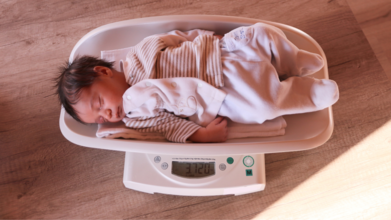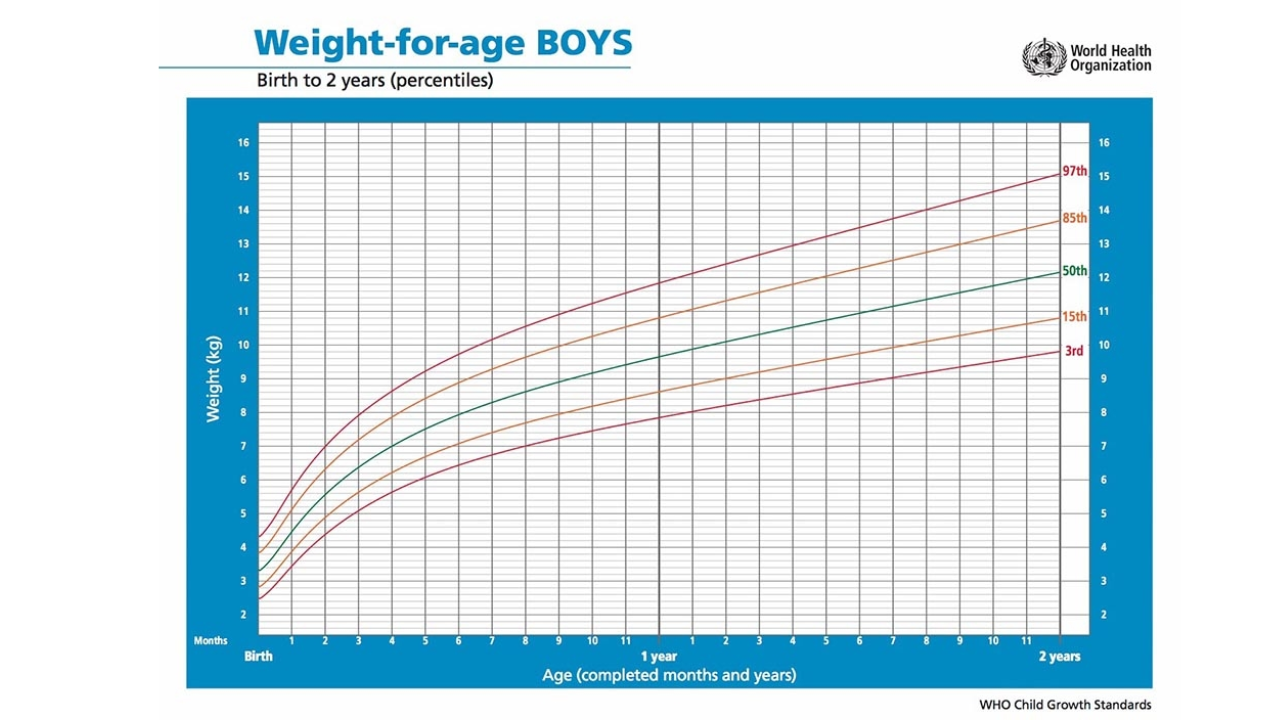- Health Conditions A-Z
- Health & Wellness
- Nutrition
- Fitness
- Health News
- Ayurveda
- Videos
- Medicine A-Z
- Parenting
- Web Stories
Ensuring That Your Kids Eat Safe Amid Bird Flu

Credits: Canva
Parents are struggling to find the correct information on the on going avian influenza A(H5N1), which is commonly known as bird flu. As per the University of Michigan Health CS Mott Children's Hospital National Poll on Children's Health conducted this survey where they asked parents if they were aware about the on-going bird flu and how to handle poultry products.
The survey included 2,021 parents of children aged 18 and younger. While 43% reported that they were unable to find accurate information, 1 in 5 parents said that the media is actually making way too big deal about the virus. However 41% of the parents wish that the government was doing more to prevent the outbreak.
The survey also revealed that one-third of the parents took action to protect their family against the bird flu, while 22% were being more careful about the hygiene. Of them, 13% were cautious handling eggs, chicken and other meat products, 12% avoid contact with birds, and 10% avoided raw milk.
25% of the parents were concerned about possible transmission between animals and humans or human-to-human spread.
So, what can be done? How can you handle poultry safely?
Pasteurisation and cooking them at high temperatures can curb the threat. It is also important to handle your poultry products when you are buying and storing them.
Also, avoid drinking raw milk to kill avian influenza A(H5N1).
The meat juice can spill over and contaminate other food items, therefore it is extremely important to store it properly, in a way that it does not contaminate another food item. Always store it in a cool bag when you are transporting it and refrigerate and freeze the meat for the first two hours of buying.
You must also cook your chicken so the viruses do not survive on the chicken.
How To Handle Eggs Safely?
Flu viruses can infect chicken eggs by entering through the eggshell. The eggshells are smaller than the pores of eggshells, which means viruses can enter the eggs and the egg's surface will still be protected. However, it is still important to handle it safely.
As per the US Food and Drug Administration, cooking poultry, eggs and other animal products to the proper temperature and preventing cross-contamination between raw and cooked food.
Is It Safe To Eat Chicken?
Yes, chicken and eggs are still safe to consume, as long as they are thoroughly cooked. Cooking chicken to the internal temperature of at least 165°F kills bacteria, viruses, and other germs, such as H5N1. The most accurate method of assuring that food is cooked is to use a meat thermometer.
Safe food handling is crucial:
- Do not wash raw chicken prior to cooking since this can spread bacteria.
- Maintain a hygienic kitchen by disinfecting countertops and washing hands both before and after touching raw meat.
- Prevent cross-contamination by employing distinct cutting boards and utensils for raw and cooked food.
Reject suspect eggs that are small, soft-shelled, or deformed since these may be a sign of infection in hens, though infected birds usually discontinue laying eggs before the situation gets worse.
The outbreak of bird flu has added substantially to the cost of eggs. Millions of birds have been slaughtered to avoid spreading the virus, and as a result, egg shortages have spread throughout the nation. Although it has impacted supply chains, it has not rendered store-bought eggs unsafe. If you buy eggs, check for pasteurized eggs to provide an additional level of security.
What Should You Avoid?
Raw or undercooked chicken
Raw or soft eggs
Raw milk and unpasteurized dairy products
Cross-contaminated foods
Meat from unregulated sources
How To Decipher What Percentile Your Baby Is Using A Growth Chart?

Credits: Canva
An infant growth chart is a tool that helps parents, doctors, and other health professionals track a baby’s growth over time. By recording key measurements, it gives a clear picture of how your baby is developing compared to healthy growth standards.
The chart records three main measurements:
- Length (height)
- Weight
- Head circumference
These details are plotted so you can see how they change as your baby grows. The vertical axis shows the measurement, while the horizontal axis shows your baby’s age.
Growth charts are more than just numbers. They help assess your baby’s overall health and nutrition. Charts differ for boys and girls, as well as for infants and older children. For babies aged 0 to 2 years, the World Health Organization (WHO) growth standards are used. From 2 years onwards, most states and territories use growth charts based on the US Centers for Disease Control (CDC).
You will usually find a growth chart in your child’s personal health record, which may come in different colours depending on where you live. Parents can also register their child for a My Health Record, a digital platform where healthcare providers can upload growth information and other health updates.
What Are Percentiles?
Percentiles are a common way of showing growth patterns on a chart. They compare your baby’s measurements with those of other babies of the same age.
For example:
- A baby on the 50th percentile for weight is right in the middle. Half of babies the same age weigh less, and half weigh more.
- A baby on the 5th percentile for weight is lighter than 95% of babies that age.
- A baby on the 90th percentile for weight is heavier than 90% of babies that age.
ALSO READ: 99th Percentile Baby: What It Means, Risks, And What Parents Should Know
Every baby grows at their own pace. Some are naturally smaller, others naturally bigger. What matters most is that your baby follows a steady growth pattern over time.
How Growth Charts Are Used

Growth charts help identify whether your baby is following a healthy growth curve. While it is not necessary for a child to match the curve exactly, their growth should generally follow a consistent path.
Your baby is first weighed and measured at birth. It is normal for newborns to lose some weight in the first few days, which is why they are often weighed again at two weeks to check if they have returned to their birth weight. After that, regular growth checks are recommended, usually monthly in the first year.

Routine health checks continue throughout childhood, with growth charts used until a child turns 18. The timing of these checks may vary depending on your state or territory.
Measuring Your Baby
Special infant scales are used for babies up to 20 kilograms. Newborns are weighed lying down, without clothes or a nappy, to ensure accuracy. After the age of 2, children are weighed standing up in light clothing.
Head circumference is measured with a tape measure to track brain and skull growth.
For babies born prematurely, a corrected age is used until they are 2 years old. This adjustment accounts for the number of weeks they were born early. For example, a 4-month-old baby born one month early would have a corrected age of 3 months for growth chart purposes.
When to Seek Advice
A growth chart is a helpful tool, but it is not the only indicator of a baby’s health. Other signs of healthy development include:
- At least five very wet nappies each day
- Pale urine
- Soft, well-sized bowel movements
- Regaining birth weight by 14 days old
- Contentment between feeds
Most babies double their birth weight by around 4 months. If weight gain is slower than expected, it could be due to feeding difficulties, illness, or other health issues.
If your baby’s growth percentile drops significantly or weight gain remains low, speak to your doctor or child health nurse. They can assess the overall growth trend and investigate if needed.
Finally, avoid comparing your baby’s growth to others. Healthy growth looks different for every child, and the goal is steady development through infancy and beyond.
ADHD Could Be Setting Your Child Up For Failure - Study Reveals Factors That Lower The Quality Of Life In Children With ADHD

(Credit-Canva)
Although many people now know about mental health issues like ADHD, depression and anxiety, a lot of their information comes from social media or movies, which can misrepresent and/or show small aspects of the illness. In reality, living with ADHD is much more difficult than we imagine.
A major study from Deakin University has looked closely at how ADHD affects a child's long-term health and quality of life. While we've known a lot about how ADHD impacts school and daily tasks, this research is one of the first to track the same group of children over 13 years to see the full picture.
The study followed 4,000 Australian children aged 4 to 17 and found that a child's quality of life is influenced by more than just their ADHD symptoms.
What Are Some Negative Factors for Children With ADHD?
Some things that negatively impacted a child who had ADHD, making this more difficult for them, were:
- Being a girl
- Having other medical conditions, like autism
- Taking ADHD medication
- Having a parent with mental health issues
The researchers explained that a child’s health was more likely to be poor if they had a caregiver with a physical or mental illness or if the child themselves had another medical condition like autism. The study also noted that children on common ADHD medications had poorer health outcomes, but the researchers say this specific finding needs more research.
The research showed that Children with ADHD tended to have better health and a higher quality of life if they had two or more siblings, a strong family support system, and were physically active.
Parenting Kids With ADHD – How Well Do Parents Cope?
When it comes to treating a child with ADHD, parents' personal experiences heavily influence the choices they make. A 2022 study published in the Child Care, Health and Development journal aimed to understand what it's like for parents raising a child with ADHD and how those experiences shape their views on different treatment options. The study found two main themes from the parents' stories:
ADHD's Impact on the Family
Parents talked about how ADHD forced them to completely change their family life. They had to constantly try new things to help their child at school and felt pressure from society to make their child "fit in."
Finding the Right Treatment
Parents emphasized the challenge of finding a treatment that truly worked for their child. They wanted to find the "right fit" with doctors and treatments. They also mentioned that factors like cost and location made it hard for everyone to get the help they needed, pointing to a need for more equal access to care.
The study concluded that no matter where they lived or what their background was, parents shared very similar struggles and goals. They all want access to a comprehensive treatment plan that involves the whole family and uses different approaches, not just one type of therapy or medication. The study suggests that we need to figure out what changes in healthcare and policy are needed to make this kind of family-centered treatment more widely available.
Why We Need Better Treatment Options For Kids With ADHD
The findings from the Deakin university research highlight that a child's health is affected by a range of factors, not just ADHD itself. A more holistic approach is needed, one that also addresses a child’s emotional and social challenges, as well as the mental health of their caregivers.
This new information is a good reminder that any changes to a child's treatment plan should always be made in consultation with a medical professional
Children Are Equally Affected By Both Verbal And Physical Aggression – Does Discipline Need Harsh Punishments And Scoldings?

(Credit-Canva)
The age-old belief that verbal punishments make kids soft and that they will not understand authority without physical punishments is not true. Even though your harsh words may not leave physical bruises on your child, the verbal whiplash from it is enough to affect your child for a lifetime.
According to a new study published in the journal BMJ Open. The research found that verbal abuse in childhood can harm a person's mental health in adulthood just as much as physical abuse.
Are Kids Affected By Verbal Abuse?
The study showed that verbal abuse increased a child's likelihood of having low mental well-being as an adult by 64%, while physical abuse increased the odds by 52%. For those who experienced both types of abuse, the risk of low mental well-being was doubled.
Researchers noted that while the harm of physical abuse is often immediately obvious, the damage from verbal abuse can be just as serious and long-lasting, even if it's not as easy to spot.
While physical abuse has become less common, verbal abuse is on the rise. The study, which tracked over 20,600 children in England and Wales, found that physical abuse cases dropped from 20% in children born between 1950 and 1979 to 10% in those born after 2000. However, verbal abuse increased from 12% to almost 20% during the same time.
The study found that verbal abuse was just as damaging to a person's mental health as physical abuse. About 24% of adults who were verbally abused as children had low mental well-being, compared to 23% of those who were physically abused. This number jumped to 29% for those who suffered both. In comparison, only 16% of adults who were not abused had low mental well-being.
How Do Harsh Words From Parents Impact Children?
Adults with low mental well-being struggled with feeling optimistic, useful, or close to others. They also had a harder time dealing with problems and thinking clearly. In most cases, verbal abuse had a greater impact on these specific aspects of mental health than physical abuse did.
For instance, verbal abuse increased an adult's odds of not feeling close to others by 90%, while physical abuse increased the odds by 33%. These findings highlight that even when a person has been physically abused, adding verbal abuse can bring an additional and significant risk to their mental health.
How You Reprimand Your Child Also Matters
A 2021 study from the University of Michigan looked at how different types of discipline affect children around the world. The study found that while spanking is always harmful, even some non-physical types of punishment can have mixed results.
The research suggests that the best way to raise well-behaved children may not be through punishment at all. Researchers believed that the most positive effects come from long-term investments in a child's life, such as:
- Spending quality time with them
- Showing them that they are loved
- Listening to them and their feelings
The study also found that when parents took away privileges, children were more likely to be aggressive and have trouble getting along with other children. They recommends that parents use discipline that is appropriate for the child's age, keep communication open, and provide a stable routine.
© 2024 Bennett, Coleman & Company Limited


